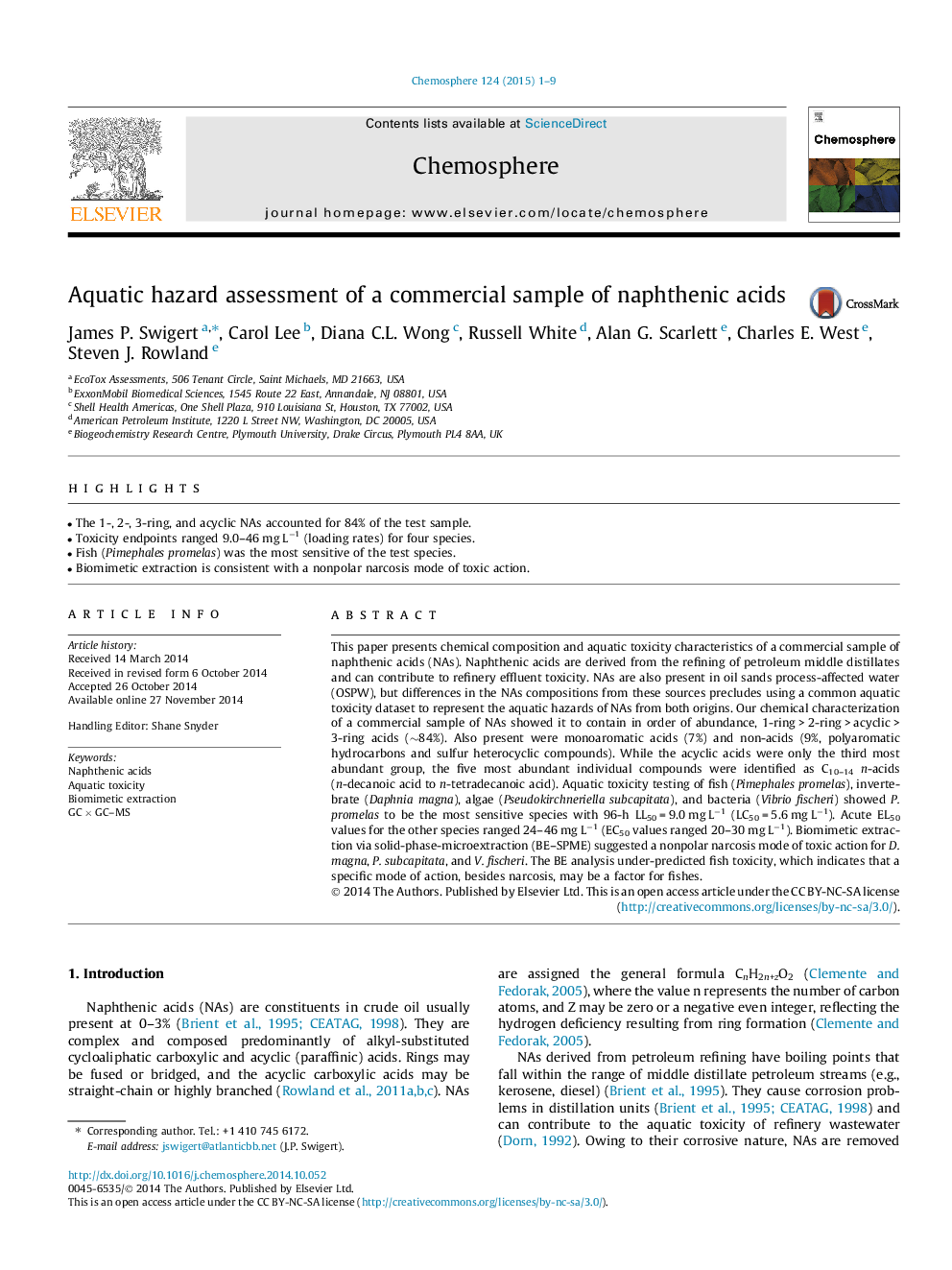| کد مقاله | کد نشریه | سال انتشار | مقاله انگلیسی | نسخه تمام متن |
|---|---|---|---|---|
| 6308055 | 1618847 | 2015 | 9 صفحه PDF | دانلود رایگان |
- The 1-, 2-, 3-ring, and acyclic NAs accounted for 84% of the test sample.
- Toxicity endpoints ranged 9.0-46 mg Lâ1 (loading rates) for four species.
- Fish (Pimephales promelas) was the most sensitive of the test species.
- Biomimetic extraction is consistent with a nonpolar narcosis mode of toxic action.
This paper presents chemical composition and aquatic toxicity characteristics of a commercial sample of naphthenic acids (NAs). Naphthenic acids are derived from the refining of petroleum middle distillates and can contribute to refinery effluent toxicity. NAs are also present in oil sands process-affected water (OSPW), but differences in the NAs compositions from these sources precludes using a common aquatic toxicity dataset to represent the aquatic hazards of NAs from both origins. Our chemical characterization of a commercial sample of NAs showed it to contain in order of abundance, 1-ring > 2-ring > acyclic > 3-ring acids (â¼84%). Also present were monoaromatic acids (7%) and non-acids (9%, polyaromatic hydrocarbons and sulfur heterocyclic compounds). While the acyclic acids were only the third most abundant group, the five most abundant individual compounds were identified as C10-14n-acids (n-decanoic acid to n-tetradecanoic acid). Aquatic toxicity testing of fish (Pimephales promelas), invertebrate (Daphnia magna), algae (Pseudokirchneriella subcapitata), and bacteria (Vibrio fischeri) showed P. promelas to be the most sensitive species with 96-h LL50 = 9.0 mg Lâ1 (LC50 = 5.6 mg Lâ1). Acute EL50 values for the other species ranged 24-46 mg Lâ1 (EC50 values ranged 20-30 mg Lâ1). Biomimetic extraction via solid-phase-microextraction (BE-SPME) suggested a nonpolar narcosis mode of toxic action for D. magna, P. subcapitata, and V. fischeri. The BE analysis under-predicted fish toxicity, which indicates that a specific mode of action, besides narcosis, may be a factor for fishes.
Journal: Chemosphere - Volume 124, April 2015, Pages 1-9
